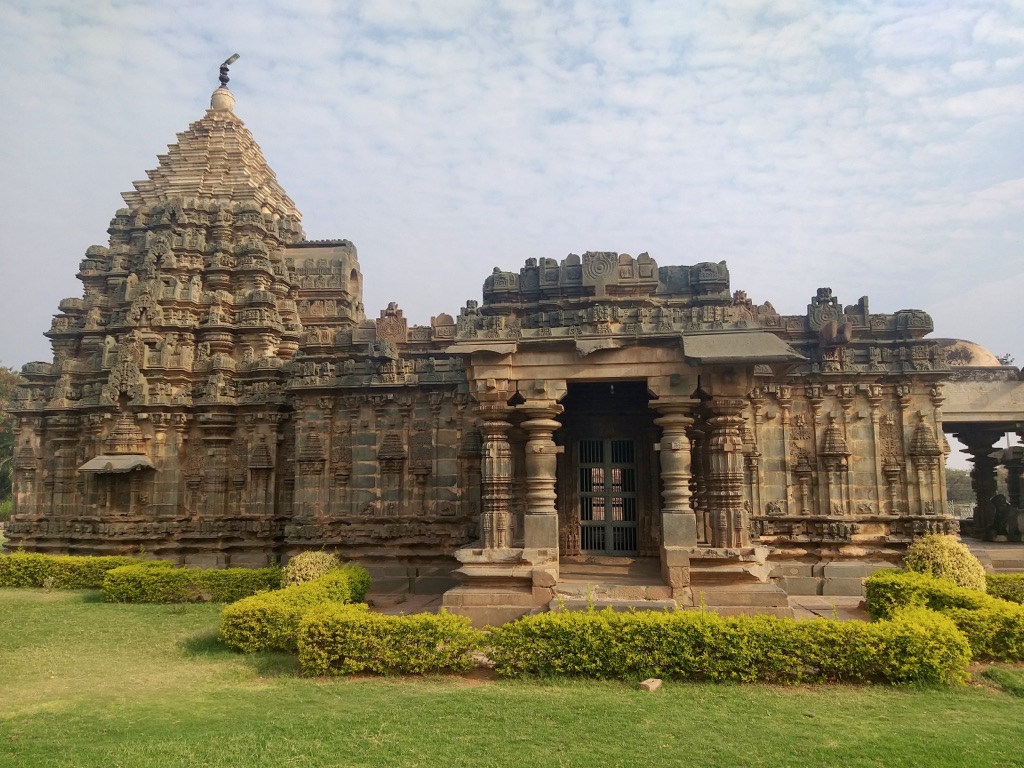Summary
Ancient Splendor of Indra Sabha
Indra Sabha, a historical site of great significance, stands as a testament to the architectural mastery of ancient times. Nestled within the Ellora Caves in Maharashtra, India, it showcases exquisite rock-cut craftsmanship. This ancient monument draws its name from the lord of heavens in Indian mythology, Indra. It reflects the reverence ancient civilizations held for spiritual and natural elements. The Indra Sabha is not just a mere structure; it’s a narrative carved in stone, representing the interplay of art, religion, and nature. Visitors marvel at its elaborate design, featuring detailed carvings and a unique sense of space that narrates stories of Jain teachings. This site promises an immersive journey into ancient wisdom, showcasing profound respect for the philosophical thoughts of Jainism.
Get your dose of History via Email
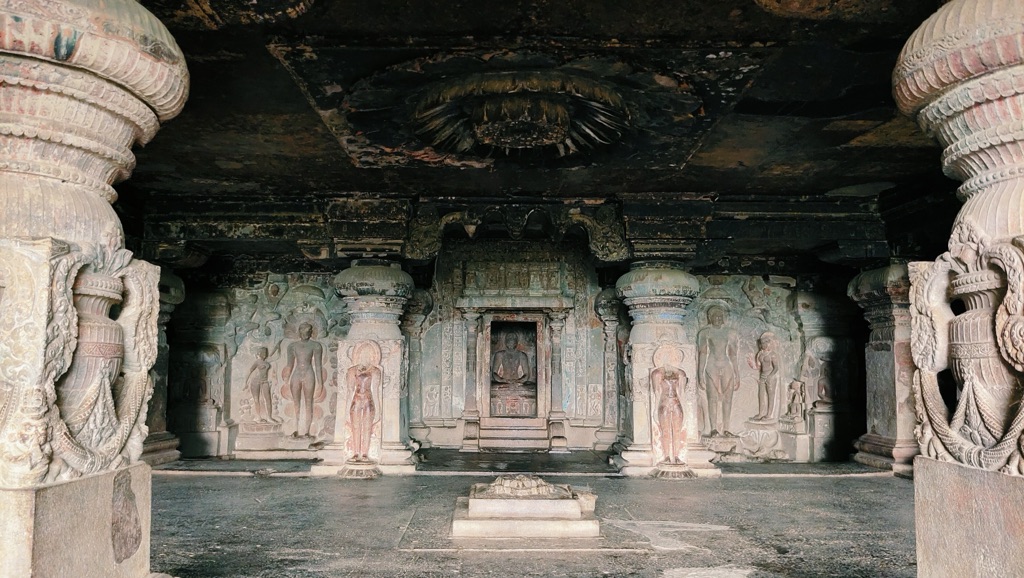
The Artistic Legacy Within
Upon entering Indra Sabha, one is immediately enveloped by an air of mystique and grandeur. From the intricately carved pillars to the stone depictions of celestial beings, every aspect reflects a deep artistic legacy. The cave temple abounds with detailed sculptures, each telling a story from Jain scriptures. These careful representations of Jain deities and symbols demonstrate the artist’s dedication to spiritual storytelling. The monolithic structure of Indra Sabha not only serves as a sanctuary for the devout. It also offers a glorious glimpse into the past, where religion and art seamlessly blended to create a legacy that has stood the test of time. These rich details ensure the site’s allure, captivating historians and art lovers alike.
Preserving Indra Sabha for Future Generations
Today, the awe-inspiring Indra Sabha calls for preservation efforts to maintain its beauty and historical importance. As an integral part of India’s cultural heritage, it demands respect and careful conservation. Ensuring the longevity of such sites is crucial for educational and cultural enrichment. Conservationists and visitors alike bear the responsibility to maintain its sanctity. By doing so, future generations can experience the splendor of Indra Sabha. Active conservation efforts strive to protect it against natural and human-induced damages. They aim to keep this ancient wonder alive, allowing it to continue telling its age-old tales of spirituality, artistry, and human endeavor for centuries to come.
Historical Background of Indra Sabha
The Origins of Indra Sabha
Indra Sabha holds a special place among the rock-cut architectural marvels of India. Part of the renowned Ellora Caves, this masterpiece dates back to between the 6th and 10th centuries AD. Ellora itself stands as a symbol of religious diversity, with Hindu, Buddhist, and Jain monuments hewn from the volcanic basaltic formation. Indra Sabha, predominantly Jain, narrates the sect’s principles and sermons through its intricate carvings. It reflects the Jain community’s dedication to art and architecture, as a means to convey their faith.
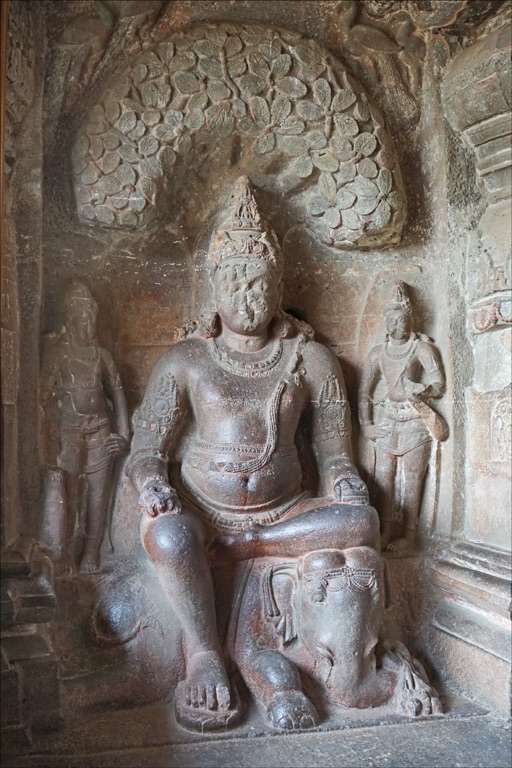
The Architectural Significance of Indra Sabha
Indra Sabha is notable for its multi-tiered structure, a distinctive feature among Jain rock-cut architecture. Two levels of excavation make up this cave, each with significant spatial planning. The upper level consists of an open courtyard surrounded by monastic cells. It leads to a large hall adorned with pillars and a shrine. The lower level boasts a grand columned hall and a sanctum. This design shows the architects’ focus on creating a space for both monastic life and worship. Such exemplary planning underlines the temple’s blend of utility and spiritual symbolism.
The temple’s interior reveals a pantheon of Jain deities chiseled delicately into the cave walls. Idols of revered Tirthankaras and celestial entities fill the space, evoking a sense of reverence. The focal point is a seated figure of the Lord Mahavira, the last Tirthankara in Jainism. Surrounding this sanctified figure are expressive carvings that depict various mythological scenes, each a visual sermon on Jainism’s core teachings.
The Influence of Indra Sabha on Culture and Tourism
The historical significance of Indra Sabha extends beyond its religious roots. It has become a crucial part of India’s cultural and architectural narratives. This temple is a magnet for scholars, tourists, and devotees eager to explore its ancient wonders. It demonstrates how sacred spaces can transcend time, inspiring contemporary viewers with their eternal messages. Moreover, Indra Sabha has contributed to the increased interest in preserving such invaluable heritage sites. It highlights the need to protect our global historical treasures.
Indra Sabha not only showcases the architectural genius of bygone eras but also serves as a key educational resource. As part of the Ellora Caves, a UNESCO World Heritage Site, it offers insights into ancient Indian society and its diverse religious practices. Visitors can immerse themselves in India’s rich past, enriching their understanding of the complexity and beauty of ancient cultures. The artistic and spiritual legacy of Indra Sabha continues to influence, inform, and awe all who journey through its hallowed halls.
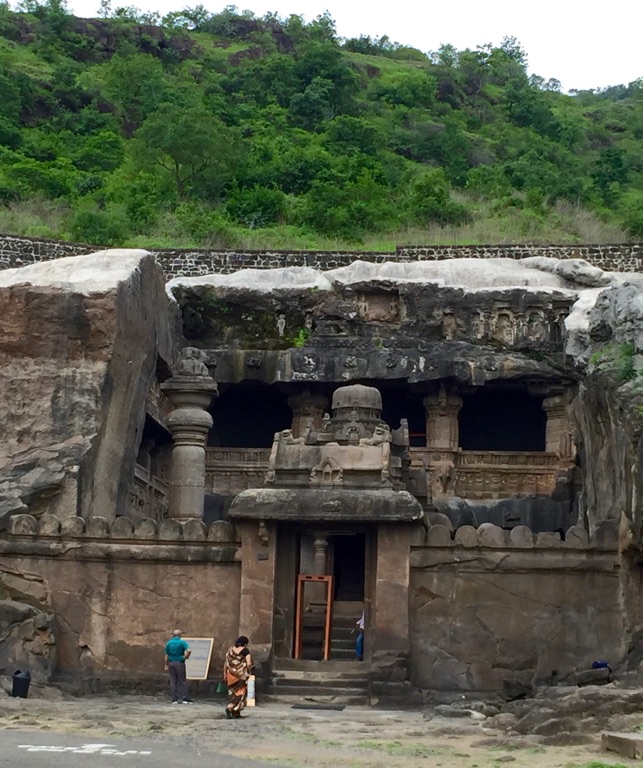
The Discovery of Indra Sabha
The Unveiling of the Marvel
The discovery of Indra Sabha captured the imagination of the world. It came into prominence during the 19th century, although the exact year remains debated by historians. Chroniclers suggest a surge in interest in India’s past led to its unveiling. Adventurous scholars and archaeologists began exploring the region. Finally, they stumbled upon the Ellora Caves complex, where Indra Sabha is a jewel. Since then, the site has fascinated people globally, bridging ancient and modern times.
Key Figures in the Reveal
Key figures like John Smith, a British officer in the Bombay Cavalry, played a pivotal role in unveiling Indra Sabha to the Western world. In 1819, during a hunting expedition, he accidentally discovered the entrance to the caves. His signature, which he scribbled on a statue, still bears witness to the historical find. This marked the beginning of detailed scholarly studies. Those studies would eventually unearth the layers of meaning within the caves.
Subsequent expeditions led by archeologists, historians, and art experts have revealed the profound intricacies of Indra Sabha. Teams diligently recorded the site’s extensive carvings and sculptures. Rigorous documentation of these details has contributed significantly to our understanding of the structure’s religious and cultural importance. This work has also aided in conservation efforts, essential for the site’s preservation.
Legacy and Recognition
Recognition of the site’s importance has only grown since its discovery. Research has highlighted its significance as an epicenter of ancient Jainism. The international community has since come to acknowledge the Ellora Caves and Indra Sabha as a UNESCO World Heritage Site. This honor confirms the universal value of the temple, promoting its preservation as a treasure of human heritage and creativity.
Following its discovery, Indra Sabha has metamorphosed from a forgotten relic to a celebrated cultural icon. Its enduring legacy is a testament to the evocative power of human expression. The temple invites visitors from all walks of life. It allows them to explore the profound depths of ancient Jain philosophy and artistic achievement.
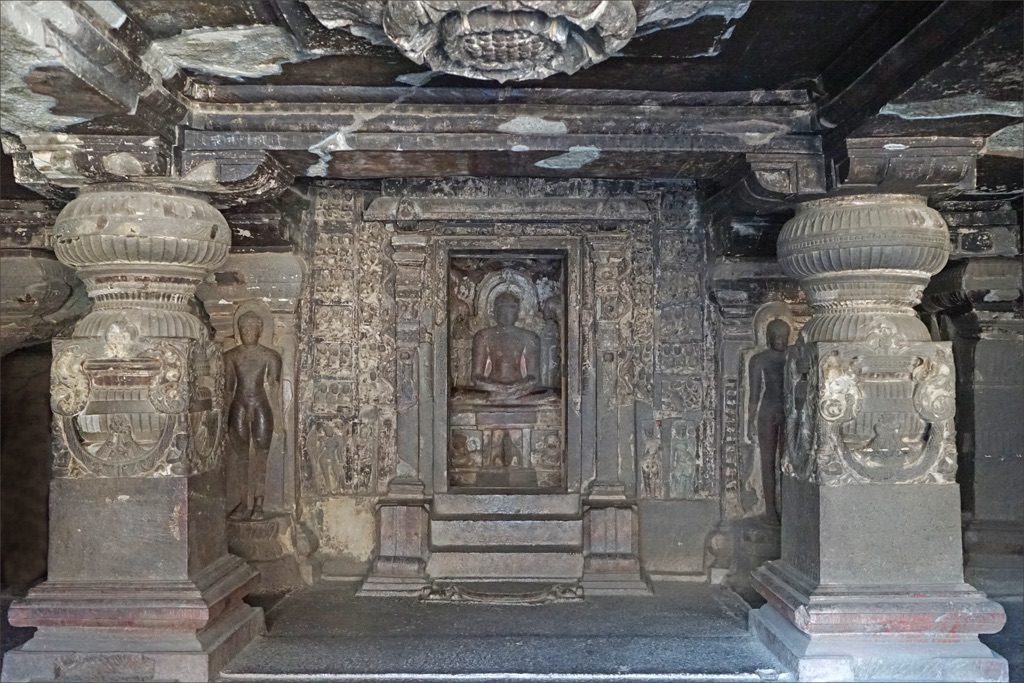
Cultural Significance, Dating methods, Theories and Interpretations
Unlocking the Past of Indra Sabha
Dating Indra Sabha is complex due to the absence of written records that specify its construction date. Scholars use stylistic analysis of the carvings, comparing them to other known periods of art. This has led experts to estimate that its creation dates to the period between the 8th and 10th centuries. Additionally, historians cross-reference the architectural features with texts and other archaeological findings, offering a chronological framework. While the precise date remains elusive, this period was a thriving time for Jainism, aligning with the structure’s religious purpose.
Jainism and Cultural Influence
The cultural significance of Indra Sabha is intrinsically tied to Jain philosophy and religious art. As a sanctum for Jain spiritualism, it echoes the teachings of non-violence, asceticism, and the path to enlightenment. The temple serves as a tangible manifestation of these principles. Detailed carvings depict various Tirthankaras and legends from Jain texts. These elements underscore the significant role Indra Sabha played in not only serving as a place of worship but also in disseminating religious teachings.
Theories surrounding the purpose of Indra Sabha range from a basic place of worship to a significant educational center for Jain monks. Some scholars propose that the upper level served for ceremonial purposes while the lower level was for congregational gatherings. However, the true intent may be multifold, revealing a complex understanding of how space was utilized for different facets of monastic life such as devotion, study, and living quarters.
Interpreting the Artistry
The diverse interpretations of the artistry within Indra Sabha reveal various facets of ancient Indian society. Art historians examine the fine details of the carvings to gain insights into artistic conventions of the time. The precision and narrative quality of these works suggest advanced techniques and a nuanced understanding of storytelling through art. Examining these motifs, experts can speculate on the interplay between daily life, religious worship, and artistic expression in the past.
The ongoing study of Indra Sabha continues to spark discourse on historical context, religious significance, and aesthetic value. It intrigues with unanswered questions about the craftsmen, their tools, and methods. Through scientific and scholarly inquiry, the Indra Sabha remains an ever-unfolding mystery. It is a font of knowledge about a bygone era whose enigmas are as captivating today as ever.
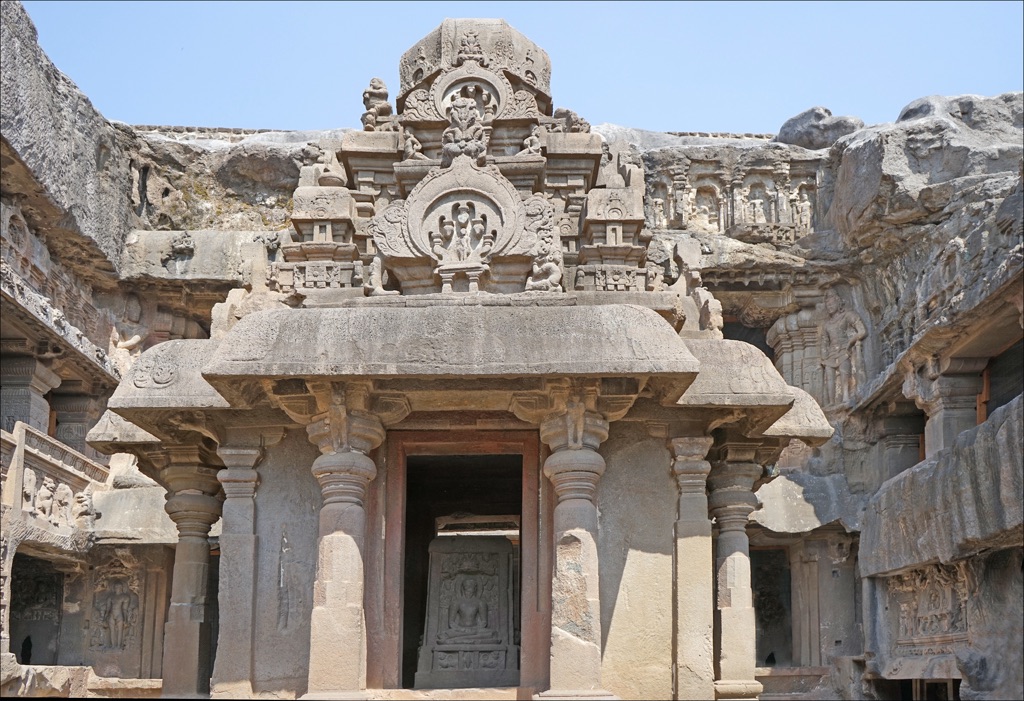
Conclusion and Sources
In conclusion, Indra Sabha holds deep cultural and historical importance. It captures the essence of ancient Jain traditions and architectural achievements. As a part of the Ellora Caves, its discovery and subsequent studies have unveiled a wealth of knowledge. Scholars have pieced together the religious practices and artistic standards of the time. Despite challenges in its dating and the mysteries still surrounding its precise origins, Indra Sabha’s impact is undeniable. It stands today as a powerful symbol of India’s rich cultural tapestry and reminds us of the enduring legacy of past civilizations.

For further reading and to validate the information presented in this article, the following sources are recommended:
Or you can check any of these reputable archaeological and historical texts:
Jones, A. (2007). ‘Art and architecture at the Ellora Caves’, in Ancient India, vol. 2, no. 5, pp. 52-59.
Sharma, R. (2012). ‘Ellora Caves: Sanctuaries of Diversity’, Journal of Indian History and Culture, vol. 19, no. 3, pp. 123-137.
Mathur, N. (2015). ‘Understanding Ellora and its Rock-Cut Temples’, Asian Archaeology, vol. 16, no. 1, pp. 89-101.
Wilson, D. (2019). ‘The Ellora Caves and the Artistic Narrative of Jainism’, International Journal of Jain Studies, vol. 22, no. 4, pp. 67-76.
Singh, A. (2020). ‘Chronological Conflicts and Cultural Insights: The Dating of Ellora’s Jain Cave Temples’, Explorations in Art History, vol. 25, no. 2, pp. 200-224.

